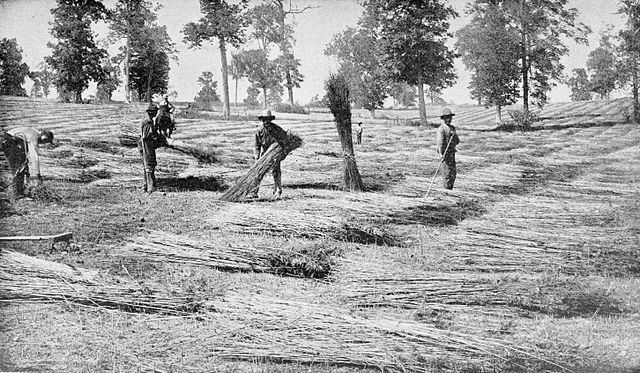The 2018 Farm Bill and the Return of Hemp to American Farms
CBDHempMarijuana Laws, Regulations, & Politics December 19, 2018 MJ Shareholders 0


by Michelle Rutter, NCIA Government Relations Manager
HISTORY
Farming and agriculture has long been a part of North American history. When the Great Depression hit in the 1930’s, both President Franklin Delano Roosevelt and Congress knew that the United States would struggle until the agriculture industry became prosperous again. As a result, many New Deal programs dealt with farming, but arguably the most notable agriculture related legislation was the Agricultural Adjustment Act of 1938, which was the first version of what we know today as simply the “Farm Bill” that is updated roughly every five years.
TODAY
Now, for the first time since the end of World War II, states are slated to soon be able to create federally legal hemp programs under the 2018 Farm Bill, which President Trump is expected to sign into law any day. The bipartisan legislation, which passed overwhelmingly in the Senate and House last week, would allow states to submit plans created by their respective Secretaries of Agriculture in coordination with their governors and chief law enforcement officers to the Department of Agriculture to grow and process hemp and hemp-derived products.
SEED TO SALE
As the law is written, state applications would need to include methods for tracking land used for hemp production and audit producers to make sure that the hemp they are growing contains less than 0.3% THC. Programs would also need to be approved by the Secretary of Agriculture, Sonny Perdue, in consultation with the Attorney General within 60 days of being submitted. Additionally, states would not be permitted to ban the transportation of hemp and hemp products through their jurisdictions, but production and sales would only be permitted in states with approved programs. The bill also contains a number of directives for research on hemp and hemp cultivation.
SCHEDULING
Hemp-derived cannabidiol (CBD) would be exempted from the Controlled Substances Act (CSA) in states with approved programs, but CBD will remain a Schedule 1 substance under the CSA and illegal at the federal level. The Farm Bill also does not impact the current Food & Drug Administration ban on CBD products or its ability to regulate the substance in the future.
INDUSTRY EMPLOYMENT
The law prevents anyone with a drug-related felony from working in legal state hemp industries, preventing many people who have been impacted by the unequal enforcement of cannabis prohibition from participating in the economic opportunities created by new programs. However, a late compromise led to the inclusion of a ten-year sunset period from either the date of conviction or the start of the state program, whichever is more recent.
THE FUTURE
Marijuana’s “cousin,” hemp, is generally barred because it is part of the cannabis plant, despite the fact that it contains very little of that drug’s key psychoactive ingredient, THC. In 2014, Majority Leader McConnell (R-KY) secured a hemp pilot program in that year’s farm bill. Since then, at least 35 states have taken up the offer and developed industrial hemp programs, and those states will be eligible to pursue a legal, regulated market when the bill is signed into law. The passage of this provision will surely bring about a new era for the agricultural industry, and the cannabis industry — when hemp returns to American farmlands.
MJ Shareholders
MJShareholders.com is the largest dedicated financial network and leading corporate communications firm serving the legal cannabis industry. Our network aims to connect public marijuana companies with these focused cannabis audiences across the US and Canada that are critical for growth: Short and long term cannabis investors Active funding sources Mainstream media Business leaders Cannabis consumers











No comments so far.
Be first to leave comment below.